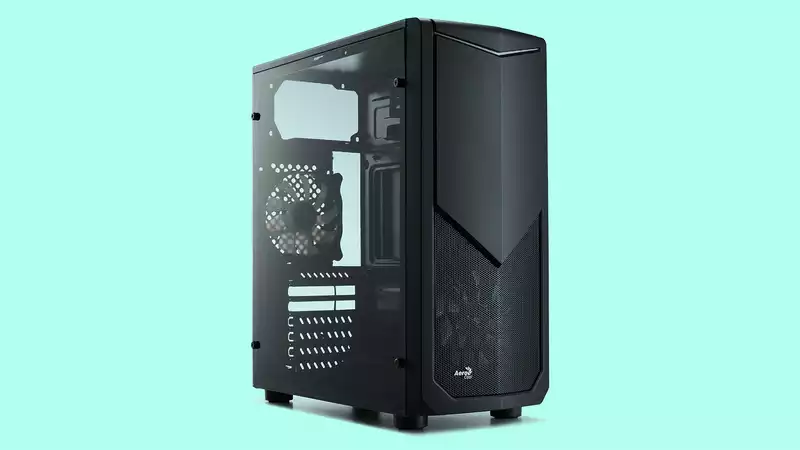This is the Aerocool Tomahawk, a PC case that can be purchased in many parts of the world typically for about $55/£35.
The Tomahawk is a decent example of what one would expect from a budget PC case. It is a mid-tower case with a boxy frame, windowed side panels, two simple fans, and rough edges. In general, however, they offer broad compatibility with the latest PC components.
While one might think that one could ask for nothing more than a standardized parts house in a budget case, after testing many similarly priced budget cases today, I found Tomahawk's somewhat archaic layout to be a hindrance to temperature rise and likely not an ideal configuration for long-term use.
The Tomahawk has no fan vents or mounts on top; instead, there is a spot on top for the PSU. This may still be seen on inexpensive workstations, but is rarely seen on gaming PCs. Because there are no vents at the top of the case, the PSU must be oriented such that air is drawn in from inside the case and exhausted through the rear vents of the unit. This means that hot air generated by the CPU, GPU, VRM, and other components will pass through the internal components of the PSU, potentially heating these parts more than normal, but more importantly, potentially increasing the temperature of other key components.
Tomahawk ran the Ryzen 5 5600X CPU hotter than most other budget cases I tested. Unfortunately, due to the layout of the case and the Molex fan (whose speed is not adjustable), there is not much that can be done immediately to ameliorate the elevated CPU temperatures. However, a CPU with lower power consumption might be better in this case, and of course the fans can be replaced.
The main component of an impressive PC case is airflow, but you would be surprised how many case designs do not do this well at all. Ideally, a handful of high-flow intake fans at the front of the case would draw in cool air, place it over the PC's components, and exhaust it. However, inexpensive cases do not always come with the ideal number of fans for this optimal setup, so it is especially important to find one that is intelligently designed to operate with limited cooling capacity.
To test the thermal characteristics of these six inexpensive cases, we built a PC into each case. We then ran several benchmarks to put routine stress on the CPU and GPU, and the average results are summarized in this graph.
Tomahawk may only offer Molex power supply fans, but there are at least two. These are standard on the front and rear. This configuration is helpful in terms of graphics card temperatures, with the dual-fan RTX 3060 I used for testing reaching a maximum temperature of 79°C. This is an intermediate temperature compared to the other cases I tested.
These fans also light up, giving the case a more interesting look with Tomahawk's windowed side panels. However, this is only a Perspex side panel, which is not that surprising given the price of this case, but there are actually several other cases in this price range that are made of glass. Surprising, isn't it?
There are other cases that cost as little as the Tomahawk, perform better, and offer more options. Of those I have tested in person, I recommend the Aerocool Zauron. This company's cases offer the same affordable price, but without the same old restrictive layout.
Our group test: cheap PC cases are a great way to cut costs on your next PC build, but many of the brands we're used to seeing in the Top Case Roundup aren't cheap enough for what we're looking for. So we asked our friends at Overclockers UK (opens in new tab) if they could loan us their cheapest cases.


Comments